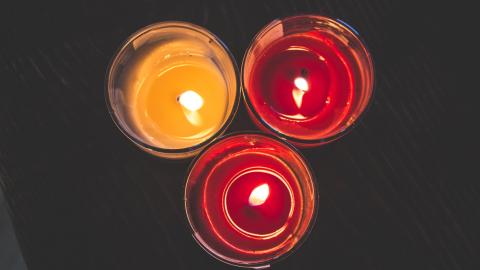150th Birthday Reflections
1 comment
128 views

This past Sunday I had the opportunity to venture to Toronto with two colleagues and sisters in Christ to see Kent Monkman’s exhibit Shame and Prejudice: A Story of Resilience. Monkman is a Canadian artist of Cree ancestry who uses art to take us on a profound and provocative “journey through Canada’s history beginning a hundred and fifty years before confederation” (quoted from exhibit’s brochure).
Monkman’s intricate and complex works of art are layered with details, each stroke and image alive with meaning, conveying hundreds of thousands of stories that have yet to be told. His exhibit was a stark reminder of the fact that there is always a story within a story and that there is grave danger in a single story. Prolific Nigerian writer Chimamanda Ngozi Adichie introduced audiences to “The Danger of a Single Story,” in her iconic TED Talk. She articulates what Monkman illustrates: stories just like art, “are defined by the principle of nkali [the Igbo word for power]. How they are told, who tells them, when they're told, how many stories are told, are really dependent on power.”
Monkman’s paintings and installations bring to light a truth that is glaring and hard for many Canadians, whether settler or recent immigrant, to see. The truth is, Canada has a history of controlling and erasing stories. As a result, many Canadians are unknowingly walking around with Ray Ban sunglasses that shadow our vision and keep us from seeing the whole story. They have believed that dangerous single story—that Canada is a mosaic, a place of safety and refuge for all who call her soil home. Although this is the truth for some, it is not the truth for all and it is incumbent on us, especially as followers of Christ, to not erase or ignore the stories of those who have been relegated to the margins. (To see Monkman's painting "The Daddies", which parodies the iconic "Fathers of Confederation" painting above, visit the Globe and Mail's article about the exhibit here.)
Artists like Monkman are a gift of hope, because with the solemnity and significance of an Old Testament prophet, they challenge us to not only remove our sunglasses, but also to consider the foreground and background of the landscape. They tell us that there are more tones and hues to be discovered and that the landscape has depth that we could not have imagined. Amidst the celebrations of Canada’s 150th birthday of confederation, Monkman reminds us that we must not forget the value and dignity of each person created in the image of God. For it is “through Him [that] all things were made, and without him nothing was made that has been made,” (John 1:3, NIV). To faithfully remember the story of each one that bears His image is to acknowledge the Divine.
No matter the length of time that you or your ancestors have sojourned on Canadian soil, I invite you to spend 2017, Canada’s 150th birthday, courageously rejecting the single story. It may take our eyes a while to adjust to truth’s glaring rays, but as the sacred text says, “the truth shall set us free” (John 8:32, ESV)!
Connect to The Network and add your own question, blog, resource, or job.
Add Your Post
Comments
Thanks, Bernadette. Great post! I expect that there are as many stories to Canada's history -- many of them painful -- as there are different people groups and cultures. I'm reminded of John's beautiful vision in Revelation 21-22 of the new creation, where all the nations are drawn to the light of God's glory and bring their own splendor to worship the King of kings, and where the leaves of the tree of life bring healing to the nations. Making Canada's "mosaic" more like this rich and healing tapestry would be a beautiful way celebrate Canada's 150th and transform its future.
Let's Discuss
We love your comments! Thank you for helping us uphold the Community Guidelines to make this an encouraging and respectful community for everyone.